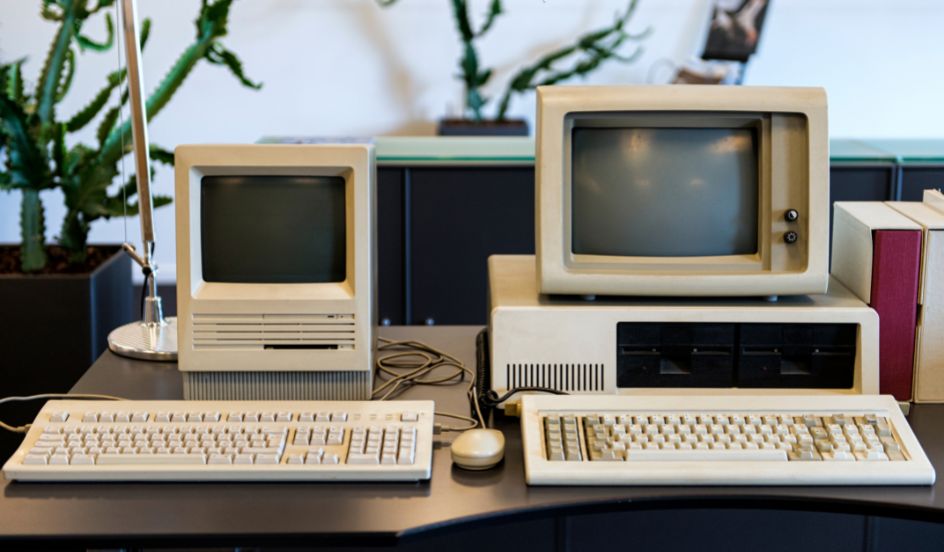The Evolution Of The IBM PC Industry
August 12th, 2016 / By Jason Eckert Dean of Technology
Today is the 33rd anniversary of the IBM PC, which was announced on August 12th 1981.

The technology industry is constantly evolving, but it is helpful to know where things began.
In the late 1970s, personal computers (or PCs for short) became affordable and started to hit the market in large numbers. It wasn’t just computer hobbyists that were using them – you’d find them in schools, libraries, businesses (balancing the books for smaller companies that couldn’t afford a mainframe computer) and homes (mainly for games). There weren’t many places you could go without seeing an Apple II, Atari 400, Tandy TRS-80, Commodore PETs or VIC-20…
It was a time of intense technological optimism, and everyone knew that the personal computer was going to be something big. Including Big Blue (the nickname at the time for IBM, which manufactured the largest mainframe computers in the world). So IBM got into the PC market with the incredibly well-built PC 5150 that had an Intel 8088 CPU and ran Microsoft DOS.
Then everyone copied it. IBM PC clones were everywhere running Intel CPUs, and Intel kept pace with the demand (as did AMD, which made Intel-compatible CPUs). By the mid 1990s, nearly all personal computers were IBM PC clones made by companies such as Dell, Gateway, Compaq, HP, and Packard Bell, and the IBM PC architecture was the standard for personal computing. There were also some IBM-manufactured PCs out there, and a very small number of Apple Macintosh computers. Tandy, Atari and Commodore computers were long since pushed out of the market by PC clone manufacturers.
Today, however, you won’t see PC clones everywhere – you’ll also see Apple Macintosh computers in large numbers. And IBM? Well, they sold their PC division to the Chinese manufacturer, Lenovo almost a decade ago.
The reason for this is that the clone PC market is diverse, competitive, and largely unprofitable. The profit margin on a typical PC is less than 10%, and in many cases, less than 5%. But the profit margin on an Apple Macintosh is much higher (most estimate over 30%), and since Apple controls the hardware and software (Mac OS X), they can provide a computing experience that justifies this markup.
So how did IBM – the founding giant of PCs – go from having profits of $4.4 billion in 1982 to ditching their PC business two and a half decades later? Simple – what led to the early success of the PC also led to its unprofitability today.
Nearly all new technologies need critical mass to achieve success early on in their lifetime, and the quickest, most effective way to attain this is to allow other manufacturers to produce that technology. It’s why the open VHS technology beat Sony’s non-open BETA technology, and also why the IBM PC became the dominant PC during the first decade of the personal computing industry.
However, money is needed to maintain and develop a technology over a longer period of time. With a large PC clone market competing for slim profit margins, the money just wasn’t there for IBM to justify staying in the PC business, so they left it to focus on their enterprise services (which is very profitable today). And Apple, who has always created PCs with a higher profit margin, grew from being close to bankrupt in the 1990s to the dominant technology company today. The money they made funded the development of a large range of new and technologies that other manufacturers didn’t have – and these innovations were introduced in their computer line and beyond to the iPod, iPhone, iPad and more.
So, while IBM doesn’t have a hand in today’s PC industry, their original PC 5150 fueled the army of clones that ultimately took it to the large industry it is today……an industry where cheap PC clones still reign supreme, and innovators like Apple benefit the most.
Click to learn about the Technology programs offered at triOS!
